
Do small cars need to make excuses for themselves?
In the United States, small cars have always been vilified. We all know this, and most of us tacitly accept it. In the extravagant blossoming of American industry and society following the Second World War (fuelled by steel and oil made cheap by the economies of scale of war), Americans looked to the future, to the horizon, to find purpose and identity in the postwar landscape. In just a few short years the Soviet Union had the bomb, and no longer was America simply America: to some, a war had begun, both in economic and military terms, but also cultural ones, for worldwide supremacy. Was this really a relevant fight to happen at this point in time? As an engineer, I'm not really qualified to say, but the fact of the matter is that Americans have never felt the need to reinforce their own culture as fervently and uniquely as they did in the 1950s and 1960s. Given the track record of American passions, it is only logical that American cars got bigger and bigger in these decades. We love excess, and even when we condemn it, we are secretly amused by it, and maybe even grudgingly respect it. Americans love feeling important, and we love feeling like we got a good deal. Big cars made with cheap steel and burning cheap gas gave postwar Americans lots of comfort, lots of speed (Sometimes. I can't believe we ever accepted two- and three-speed automatic transmissions as anything other than a crime.), and lots of car for our money, and dirt-cheap fuel meant that we could even drive long distances without breaking the bank. What's really important here is that these cars made their drivers feel important, and sophisticated, and like they made the deal of the century. It doesn't matter whether our cars were overpriced or whether they weren't, or whether they were cheaply built or not: I said in my Kia Forte review that the impression an artifact of consumer culture makes can be just as important, if not more so, than its actual physical nature. We put stock in the way things make us feel because our feelings are the reality we inhabit: we are inherently irrational creatures, and no matter how we spin it, our experiences in our lives and our world are affected by our feelings, our preconcieved notions, and our biases. Yes, this is a driver of great evils in our world, but it also lets humans see beauty and personality in the mundane and the everyday. Without the ability to ascribe personality, emotional value, and a perceived identity beyond mere physical description to our world, we would not have many of the greatest (subjective!) works of art of our time. We like cars that make us feel good, because a car that feels good is a car that is good.
And so America made big cars that had huge V8s and slushy transmissions and Stay-Puft road feel and we saw that it was good.
Meanwhile in Europe, gas was expensive, steel was expensive, and the collective cultural trauma of two world wars and a massive economic downturn was just starting to be healed over with a good dose of nuclear war fears and some pretty impressive Brutalism.
Postwar Europe is what gifted us microcars like the Peel P50, the BMW Isetta, and the Fiat 500. They were extremely efficient, relatively affordable, and delivered the functionality that families absolutely needed without burdening them with excessive features, weight, or complexity. In many cases these cars were even legally considered motorcycles, making them more accessible to working-class individuals who couldn't afford full drivers licenses. The original Morris Mini was designed along these same lines: a transverse engine gave the passenger cabin more space, the stamped bodywork and structural floorpan made it fantastically simple to assemble, and its light weight let it handle with much more expensive sports cars. Sounds a little bit like a VW Beetle but with less risk of lift-off oversteer. Hmm.
The original Mini was born of necessity, as a tool of the working class, but as always seems to happen with small fun cars, we start to make excuses for them ("It's so fun to drive, never mind how small it is!"), and the legacy of the Mini became not another postwar subcompact, but one of the econo-sport greats. This meant that in the United States, where the big car was king, the Mini was viewed as a curiousity, as an emblem of British eccentricity. Its cute styling, small size, and miniscule engine let Americans talk down about "inferior" small foreign cars while still accepting its quality as a car (since it sold so well). We have always talked down to cars like the Mini, because we can't fully respect them, but we also can't fully dismiss them either. We're forced to regard them as legitimate cars, but we do everything we can to delegitimize them as realistic consumer choices by complaining about their limited space and light weight and perceived lack of safety and a raft of other excuses for getting big cars that we've all heard. Americans are programmed to disrespect small cars: it's in our culture. This disrespect is so deeply engrained because we forged a national identity of excess, and we can never escape that without subverting that identity, which is a scary proposition, and for good reason.

By 2000, the Mini had some of its relevance, having been eclipsed by affordable economy cars and sport compacts, but it soldiered on, finally being bought by BMW. BMW brought a lot of changes to the Mini, and in a lot of ways, adjusted its physical nature to be more in line with its legacy and perceived nature. Finally, the Mini became a cute, sporty, small car that made its own excuses for being small. This also meant that it became more expensive and way less conventional. BMW made the Mini performatively quirky and performatively fun, but it worked! It's quirky and fun! That's good, right?
The Mini that most Americans know is the BMW Mini, with its wacky interior styling and angry exhaust noise and unabashedly compact design. At least BMW gave it a full hatchback instead of the BMC Mini's little trunk door thing that went under the rear window. According to Wikipedia, that was done because the shelf behind the rear seat and under the rear window acted to stiffen the bodywork and therefore required the boot to be sectioned off vertically. Anyways, the new Mini was a car whose identity hinged on being seen as quirky, fun, and cute: everything that we want a small car to be. The new Mini is a small car actually made for Americans, because it justifies itself, unlike your Ford Fiesta, which tearfully proclaims that it's a real car, even as it is laughed at by know-it-alls who think that subcompacts exist purely to act as extra crumple zones for their SUVs.
Mini couldn't fully commit to purely the sporty compact coupe hatchback act forever, however: the first signs of change came with the four-door Mini, which Mini purists of course protested over, but it was a logical development: The Mini was becoming a family compact car for middle-class parents who enjoyed driving enough to still want their car to handle well, and a four-door version makes the backseat easier to enter and easier to use devices like infant car seats with. Mini branched out further with the Countryman crossover (discussed here) and the Clubman wagon. While aforementioned purists may complain about these bigger, heavier, more family-oriented Mini models diluting the identity of the Mini hatch, it is hard to deny that family-oriented Mini models are closer in spirit to the original intentions of the first BMC Mini.
Is the Countryman really a Mini?
Is it small?
Well, yes. It's not quite as small as the Mini 2-door (or 3-door, depending on who you ask) hatch, but it's not a big car either: its 2.6m wheelbase is well within compact car territory, and it features very short front and rear overhangs that give it those classic Mini lines. Where the Countryman really compromises its Mini lines is with its height: The rear window has been made more vertical in order to maximize boot space, and the body has been raised relative to the wheels to lessen the impact of the wheel wells, with a taller roof also giving more headroom and allowing for a more upright seating posture, which minimizes the floorpan area the seats occupy. This is an extremely tightly optimized car, but it manages to make the Countryman spacious while still being small, nible, and looking like a Mini should.
Is it affordable?
Not really. Minis are BMW's most affordable marque, barring perhaps the X2, which verges into premium economy car money as opposed to affordable premium car money. Bought new, the Mini Countryman is not exactly cost competitive with similar subcompact crossovers from other manufacturers, but as a Mini it commands the price premium that the marque is associated with now. This is not exactly an economy car: according to fueleconomy.gov, the 2013 Mini Cooper Countryman gets 27mpg combined. While this is decent for a crossover SUV, it's a little disappointing for a car that clearly is meant to function as a large hatchback. An Atkinson-cycle engine and taller gears might give boost its fuel economy to economy sedan territory, but they would also compromise its performance, and that's not a compromise Mini was willing to make, and for good reason: The Countryman is a lot of fun to drive!
Is it sensible?
Largely so, yes. First off, it's very easy to see out of: the big windows give a huge field of view, constrained only by the high sill of the rear window. The Countryman also boasts a surprisingly large trunk space, and with two rear seats (I believe there is an option for a rear bench, but this car had only two back seats), the trunk is accessible from the rear of the car. With the back seats folded down, space is good enough for light utility tasks and road trips, but I doubt that the Countryman has enough space to haul Ikea furniture boxes and that sort of thing. The Clubman is actually longer and is likely a more practical option for those who want a Mini that can really haul cargo: the Countryman is more about hauling people. As mentioned previously headroom is generous, though legroom is a little cramped for the back seats, despite the best (and very clever) efforts of BMW's engineers. The back seats are of course easy to enter and exit because of the four-door body plan, and for normal in-town tasks, the Countryman is quite suitable. Mini used a strange modular rail system for the central cupholders and such in between the front and rear seats, allowing cupholders, storage boxes, and a removable sunglasses case to be swapped around and repositioned according to the occupants' needs: this is a very clever system, but I fear it solves a problem that didn't exist in the first place: the presence of the rail inherently limits the space available for storage, and storage volume and dimensions are compromised, though there is an effectively infinite number of storage option configurations, provided you're willing to go on the Mini website and buy yourself some more storage bins. I hear that later models of the Countryman deleted this rail system in favor of a more conventional solution, which makes sense, but it's a shame to see a legitimately creative and innovative (if flawed) interior design solution relegated to the history books. Still, the Countryman keeps Mini's oddball style while being a more sensible, spacious offering for families and carpoolers: while it isn't your grandpa's Mini, it very well might be your dad's.
Is it the sporty compact that people always talk it up to be?
I will admit that "fun to drive" does not necessarily mean "sporty", and because those are two different things, I cannot simply say "It's fun, therefore it's sporty." I'll need to move on to the user experience of the car in order to really answer the question.
What is it like to drive and occupy?
First off: Why is it a Cooper Countryman?
The presence of the Mini in the contemporary American cultural zeitgeist is not the economy-oriented Mini, but the sporty Mini Cooper. When you say "Mini", someone in the vicinity mentally completes that with a "-Cooper". The Mini Cooper is the Mini. They are one and the same. The idea of the base Mini hatch (Mini One, I believe) is one so seemingly unlikely as to be nonexistent. We fail to believe in the existence of the non-Cooper Mini and therefore it fails to exist. I theorize that the reframing of the sensible Mini as the fun Mini Cooper is what led BMW to release all the John Cooper Works trim variants, as if to say "Remember how Cooper was a performance trim? That's still what it means."

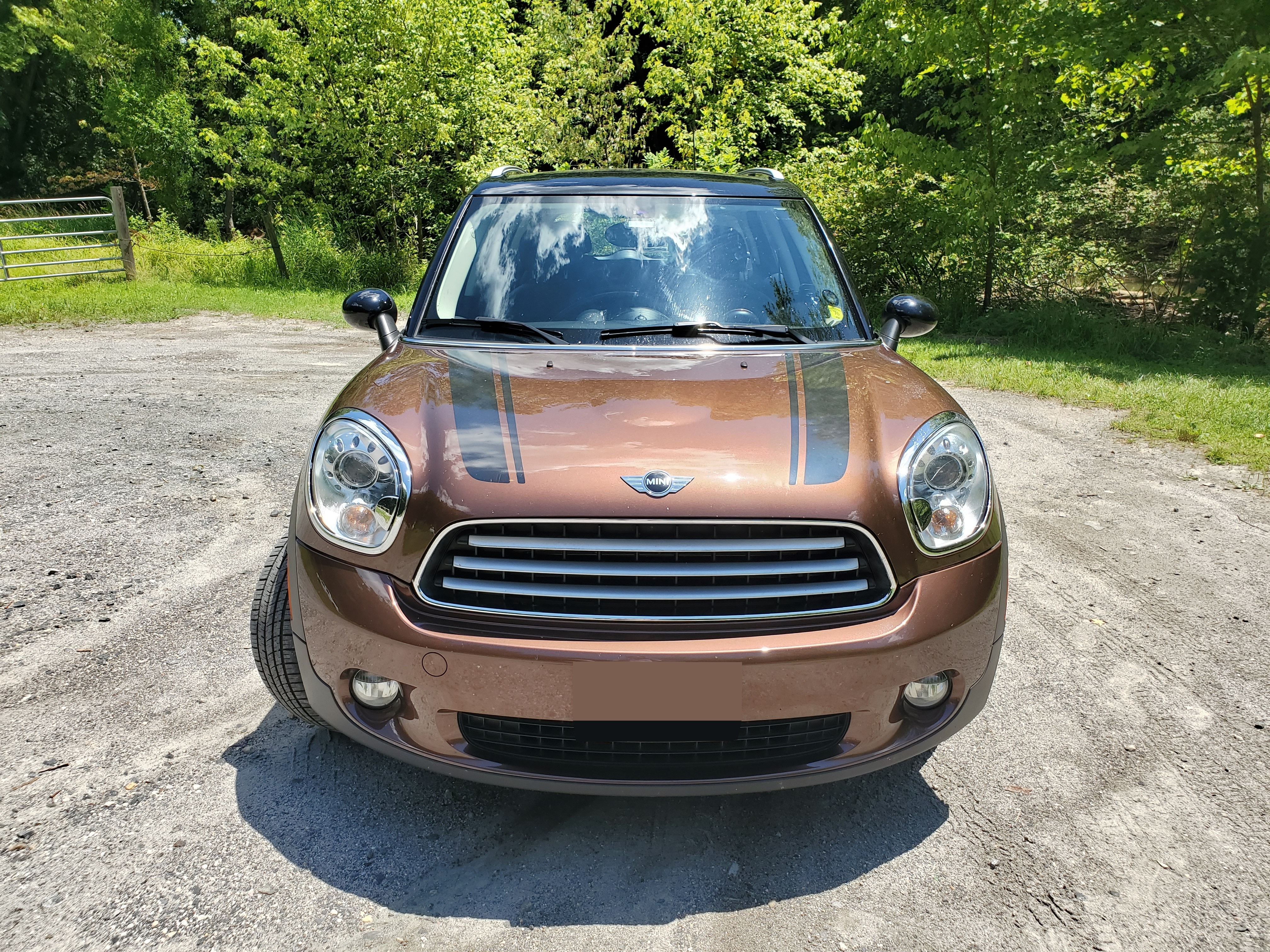
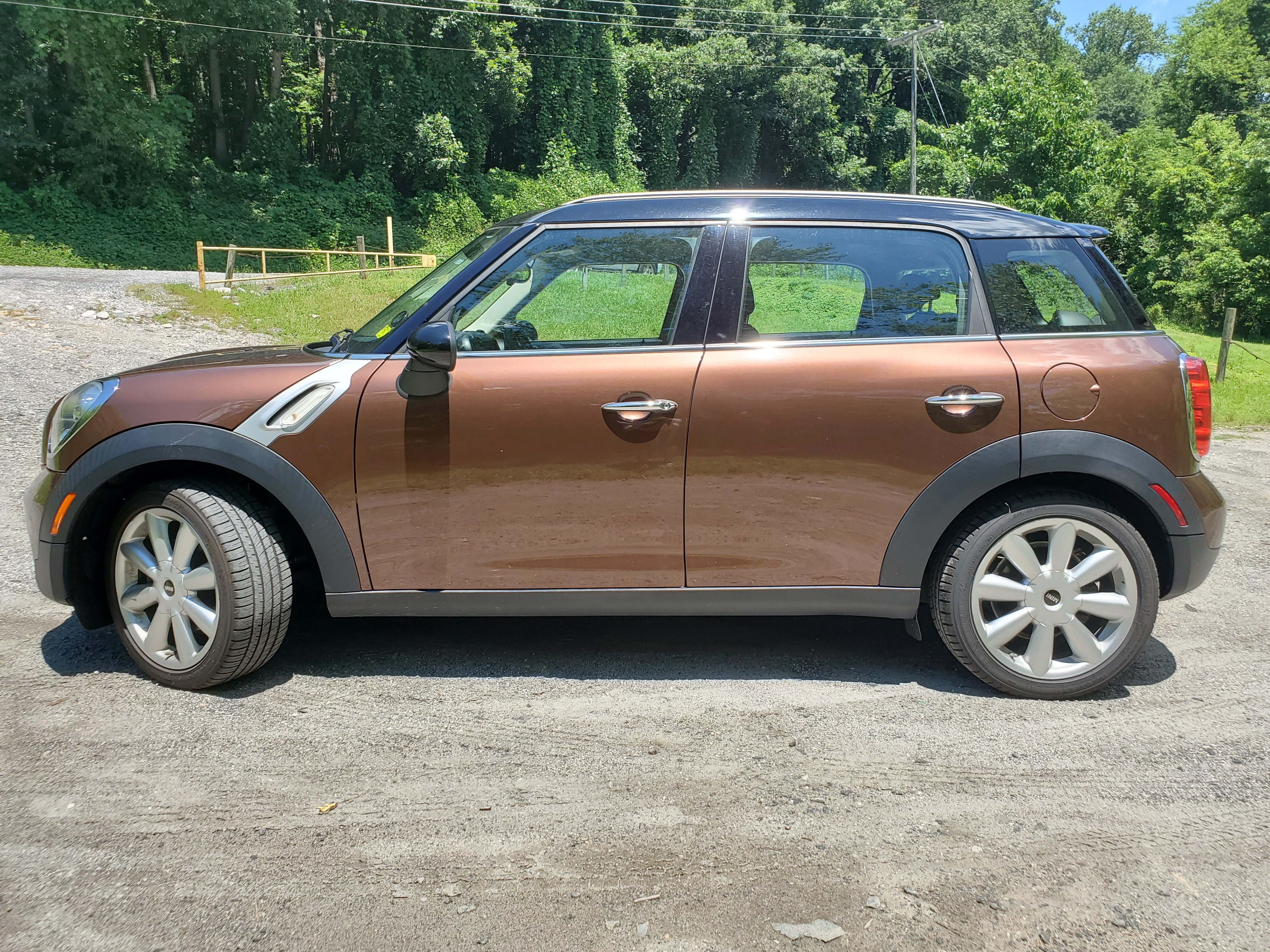



In any case, the Countryman discussed here is the Cooper Countryman, ostensibly with a sportier engine and sportier suspension tune than the base Countryman One. While the One's 1.6L engine makes merely 97hp, the Cooper's 1.6L unit produces 120hp and 118lb-ft (figures from Wikipedia.org). By American standards this is laughable, but in the context of European car design, 120hp is quite enough to have fun with in a car this size.Considering that the Countryman's curb weight is a hair under 3000lb, its power to weight ratio, while low, is still relevant in the context of the subcompact/compact crossover segment. That said, if you need speed, don't get the Cooper: opt for the Cooper S, which gets 180hp with a turbo I4, and doesn't weigh much more. But enough number crunching: how fast is the Countryman in the real world? After all, scores of car movies and mecha anime have told us that the power of the machine matters less than the hot-blooded resolve of its pilot. Turns, out, it's slow. Sorry, but the Cooper Countryman isn't fast. I don't mean to say that it's actually slow like the 2019 Outback was (the 170hp 2.5L boxer diluted by AWD and 3600lb of crossover is pretty sluggish), but it definitely didn't give me the kind of acceleration that I expected from the Mini Cooper Countryman. The engine sounds great, for what it's worth, and hard acceleration feels rewarding: at no point does the engine feel like it's begging for mercy when driven hard. The engine of the Countryman Cooper feels like it's giving its all enthusiastically, and throttle response is snappy, with reasonably predictable torque. Raw power, as I mentioned, is lacking: The Cooper has enough get-up-and-go for passing at lower speeds (less than, say, 60mph) and highway on-ramps, but it's not a turnpike bomber. I will repeat that the engine is quite fun to drive hard at lower speeds however: you feel like you're going fast whenever the engine gets spinning fast enough to make real noise.
Of course an engine is nothing without a good transmission. This Countryman was equipped with a six-speed automatic gearbox that, like all good automatics, features a Sport mode and a manual shifting option. Curiously, BMW went with a pull to upshift, push to downshift mechanism, unlike seemingly the majority of manufacturers implementing Tiptronic-type controls. I've heard people say that this makes upshifts easier on hard acceleration but having driven a lot of Tiptronic-type transmissions, I can confidently say it makes no difference and BMW just thinks forwards for downshift and backwards for upshift is fun. The transmission logic itself seems to actively encourage the driver to shift manually, however. Its shift decisions are just plain confusing most of the time, and the engine lingers at high RPM often and shifts up or down unpredictably at times. The transmission felt like it didn't know whether to be sporty or efficient, and ends up not really achieving either particularly: shifting for myself let me drive smoother and more predictably, and the shifter action is very solid and satisfying, making such a driving style quite enjoyable. The shifter has a lot of weight to it and slots into heavy detents that make a nice, solid noise: Mini really wanted the automatic shifter to emulate the experience of shifting a manual. Sport mode can be accessed either by simply moving the shifter into the manual position or by pressing an equally satisfying switch on the dashboard (shielded of course, because why shouldn't your German-made British compact crossover feel like flying a Spitfire).
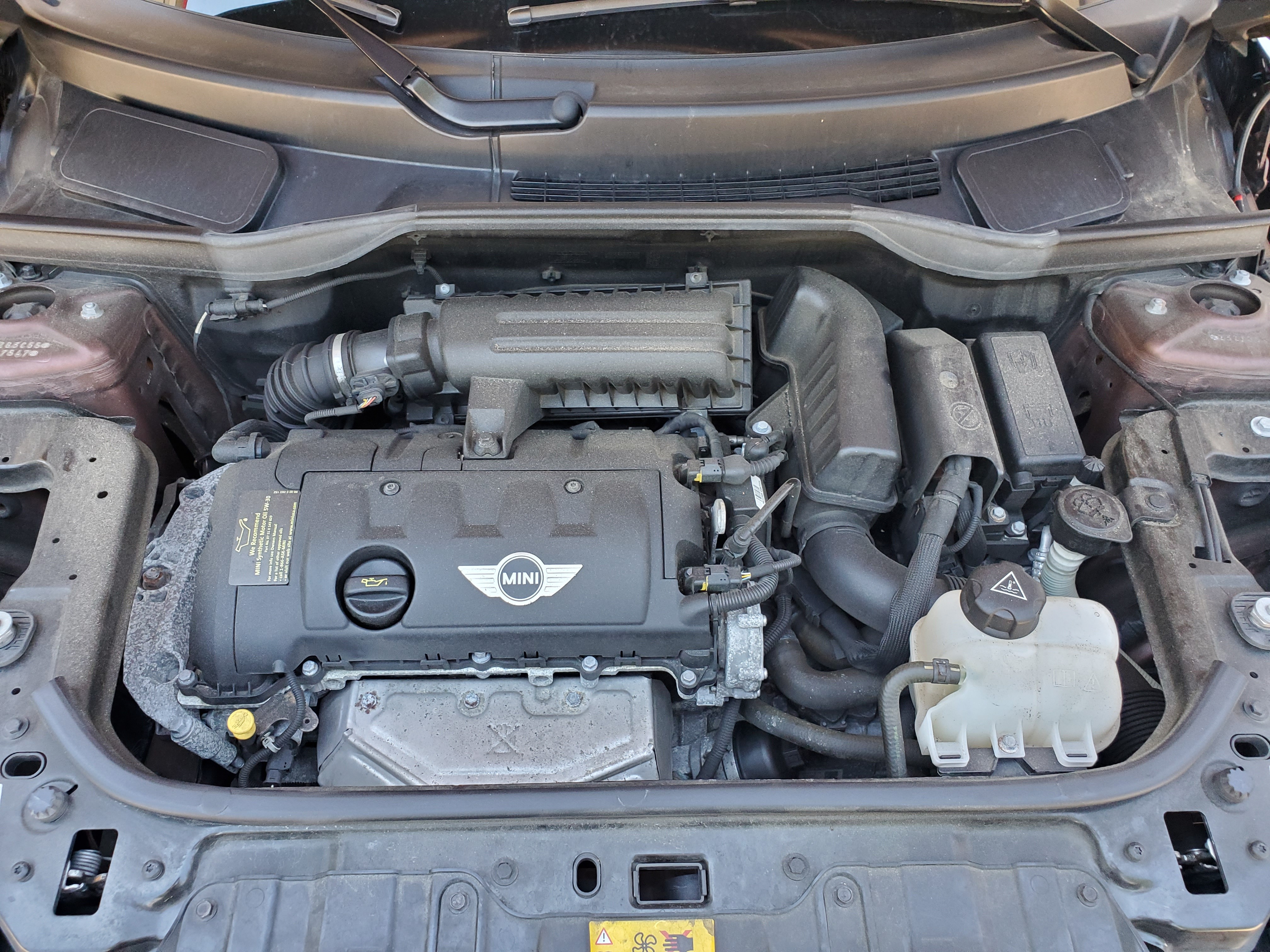
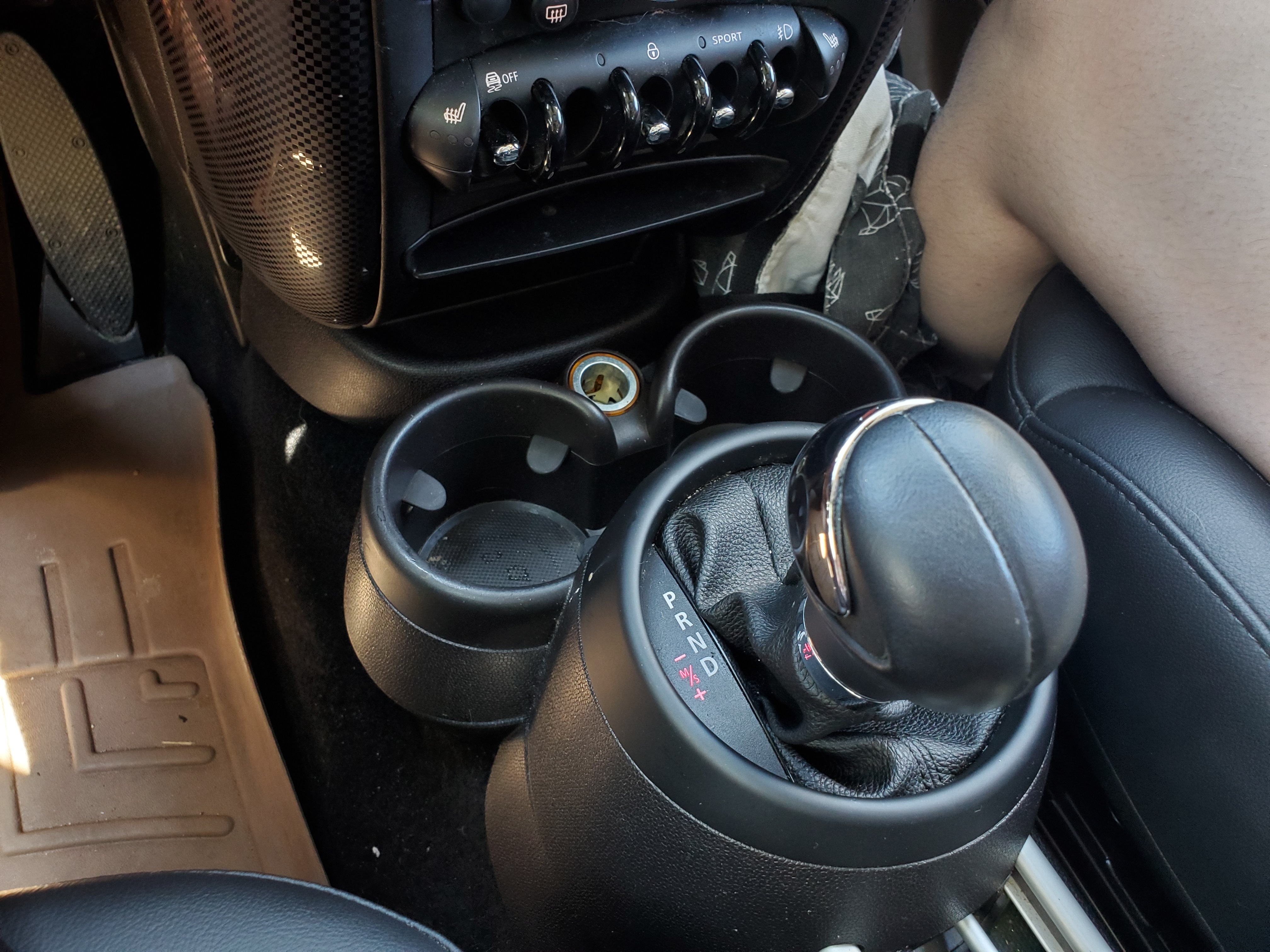
The transmission shifts fairly smoothly, but it generally feels normal for a torque converter automatic: the delay between commanded and executed shift is short enough to be unobtrusive and manual driving is smooth and comfortable. This is one of few automatic cars I've driven that I found myself shifting manually nearly all the time: For some cars (Audi A4 Allroad for example) this is high praise of the quality of the car, but for the Cooper Countryman, that's a mixed blessing. Manual driving is fun and dynamic, but automatic driving is, if not maddening, at least thoroughly vexing. Before this review is even over, I would like to strongly advise that anyone looking at getting a Mini seriously consider, and test drive, the manual version as well as the automatic: While the automatic transmission's shift logic is okay, it definitely isn't perfect.
The Cooper Countryman, being pretty light for a crossover, naturally brakes well. A stiff pedal is a little misleading, making the brakes feel unresponsive at first, but it has more than enough brake force, as do most new cars, and the steering feels solid and doesn't jump around on hard braking like some cars do. The small discs may experience some fade with harder driving, but this isn't a race car, so that shouldn't be a huge problem for normal use cases.
The steering generally feels good: Unlike some cars, Sport mode doesn't seem to change the power assist gain, and instead only affects the powertrain. Like all decent new cars, the Countryman's steering feels responsive, and its turning circle is appropriately tight for a Mini, though still wider than I expected. I found that the Countryman's strong suit is that which Minis got their reputation with: it has stellar handling for a front wheel drive crossover. Body roll is well controlled and the steering response is snappy both entering and exiting corners. I was unable to get the Countryman to understeer, and the fully independent suspension (MacPherson struts up front and some kind of multilink trailing arm in the rear) handles both bumps and corners without fuss. The suspension has pretty stiff shocks, which lends the car a sporty suspension feel (fortunately not so sporty as to physically attack your spine on less well maintained roads), and the Countryman finds a happy medium of comfort and performance when it comes to suspension design, with handling that I consider to be in lightweight hatchback territory, not compact crossover territory. If you live in an area with twisty country roads and you need a lot of space for the smallest footprint possible, look no further than the Cooper Countryman: Its engine is happiest at lower speeds, and it handles well enough to be a guaranteed good time thrown around tight corners. Just don't corner too hard, or the cupholder module will unclick from the rail system and douse your husband's lap.
So the Cooper Countryman makes the most of its small engine, gets appreciably good fuel economy, handles like a go kart (a 3000 lb go kart at least), and has a fun to work transmission. Sure sounds like a Mini to me. For better or for worse however, I can't skip discussing the interior.
It has a Mini interior. I'm being overdramatic about the interior, as it plays up its own quirks organically and arrives at a cohesive and unique design language that's just so very Mini. The name of the game here is circles, but Mini has also added shielded toggle switches that emulate aircraft interiors. The entire interior is actually meant to feel akin to an aircraft, with big circular dials, an overhead control panel (which among other things controls colored mood LEDS!), and carbon fiber-inspired accents on the central dashboard panel. If BMW had played up the aviation aesthetic any more, the handbrake would be a bright red in-dashboard lever like a Boeing 737's landing gear lever.
The controls inside the Cooper Countryman suffer (benefit?) from the same bizarre design language as the rest of the interior, but they at least have the good sense to be (generally) placed logically.Various main functionality controls (Traction control, automatic high beams, Sport mode) are on the center row of shielded toggle switches. These switches look weird but work quite well: I might not suggest they be used elsewhere, but they contribute strongly to the aesthetic Mini seeks. The entertainment console and HVAC controls duplicate the round gauge aesthetic, with the entertainment console performing this to a fault: the car's warning lights, fuel gauge, and speedometer are all mounted in the center of the dashboard. This is cute! Only a few cars have done this, but with the old Toyota Yaris (Yarises?), the central speedometer is far up the dashboard, easier to see from the driver's perspective. However, Minis, with their short windshield length, places this directly on top of the dashboard: this is effectively impractical as a driver's instrument. Looking at it while driving is literally not safe. Knowing this, Mini placed a small digital speedometer in the center of the cute steering column-mounted tachometer. Funnily enough, when in Sport mode, this speedometer just says "SPORT" instead, moving the already-small speedometer down to the already-cramped odometer. Frankly this entire instrument cluster is very difficult to get any amount of useful information out of. Again though: the maintenance of the aesthetic has become more important that the functionality of the machine.

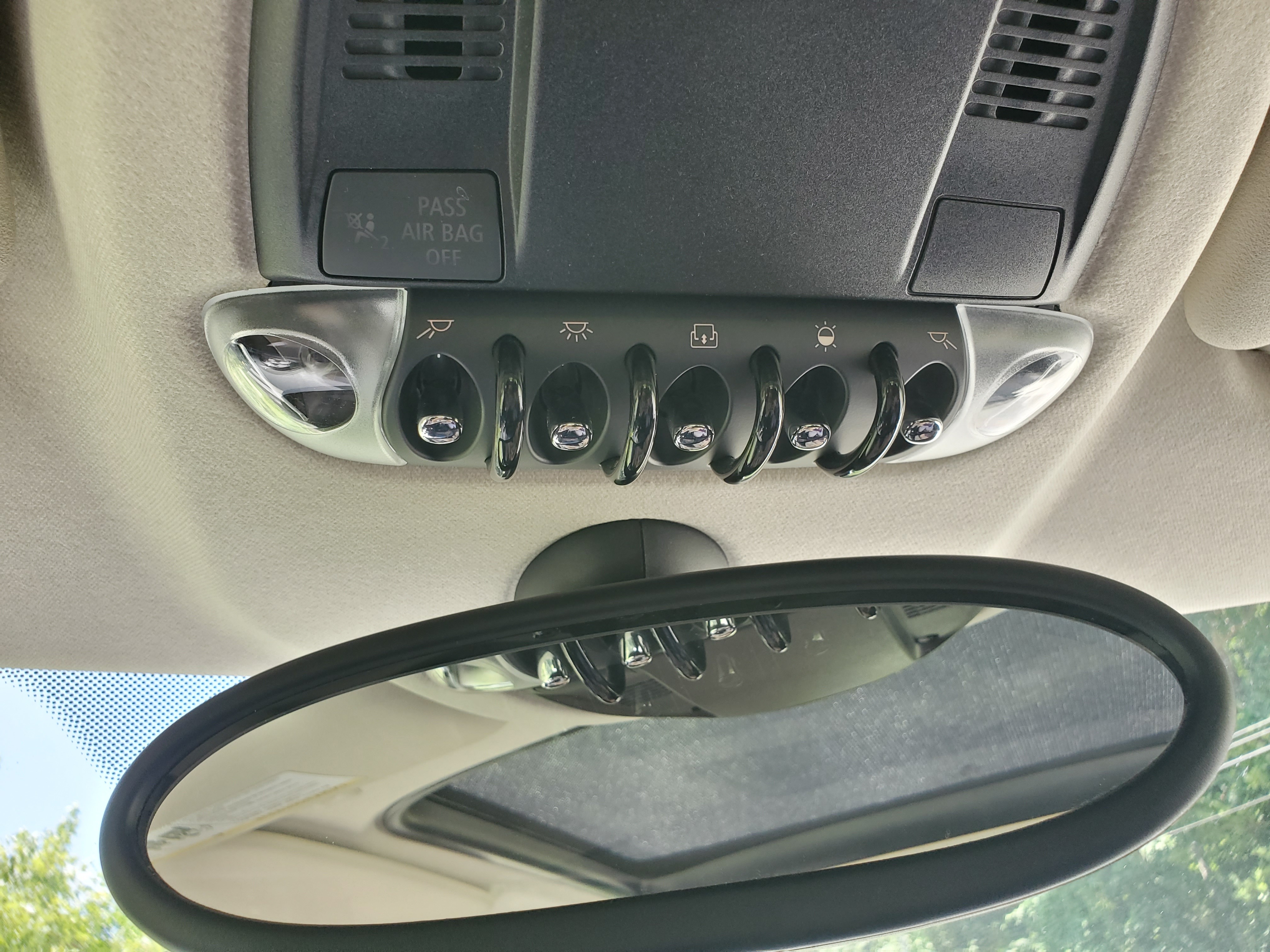
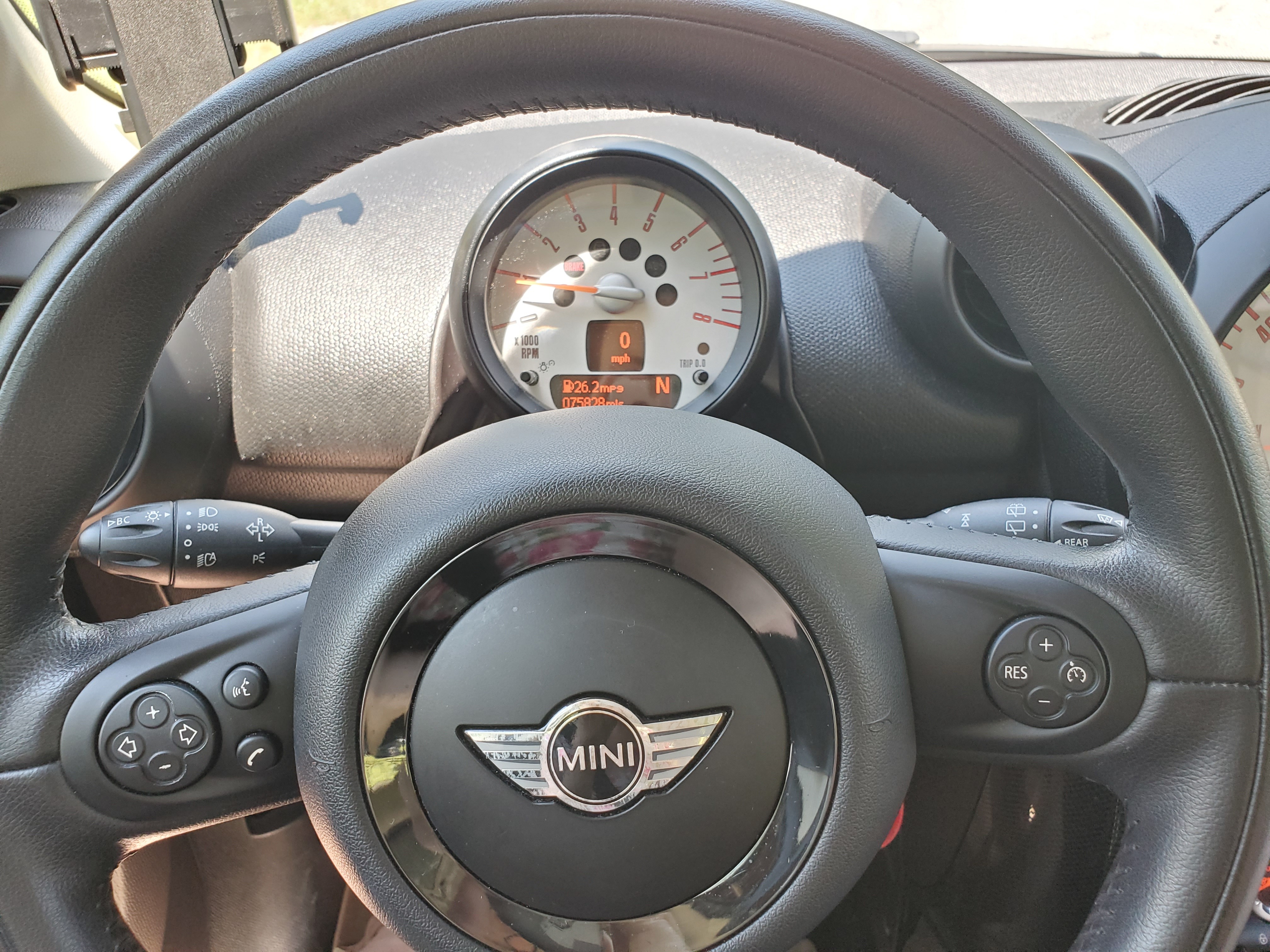

Remember what I've been saying though: The impressions an artifact makes, and the subjective interpretations and responses it provokes, become more important than the physical nature of the artifact. Yes, the Mini Countryman has difficult to use controls, and a strange interior, and unconventional storage bins, but these all contribute more meaningfully to the artistic significance of the car than they do to its physical parameters. Yes, Mini sacrificed utility or usability in some regards, but not without reason.
So is the Countryman a Mini?
Sorry Mini Cooper purists, it is. The fact that the first BMW Mini forwent its economy subcompact roots in order to pursue its legacy as a sports compact, and that was the moment the Mini died. The Mini Countryman pursues the same aesthetic and experience and set of expectations that the Mini hatch does, and if analyzed through the lens of The Implied Outweighs The Actual, it is the selfsame artifact. If the Mini hatch is a Mini, then so is the Countryman.

So the Countryman talks Mini talk, but does it walk the Mini walk? Well, keep in mind that this is a family car first and foremost, and it can't escape its pattern of creation far enough to be a sport compact. That said, it has a buzzy engine that's quite fun to drive (if a little underpowered), a fun(mostly) transmission, and the best handling I've yet experienced in a compact crossover. As with all Minis, it seems that the true strength of the Countryman is the personality it offers: It's aggressively, almost performatively quirky, but that works, and it does reflect on the driver. It's cool to be seen in a Mini. The less than ideal fuel economy, small size, and hard to navigate interior all contribute to the offbeat energy this car projects, and lend strength to the personality that is perceived in it. If you want a compact but spacious car you can have fun with, then get a Countryman. If you want real power, opt for the Cooper S trim, but this car will give you plenty of entertainment regardless, and you will always, always, look interesting stepping out of it. By the books the Countryman might not be great, but ask any Countryman owner and they'll tell you they love it. The Mini Cooper Countryman is a car made for the postmodern world, where meaning is divorced from reality, where statements carry as much weight as actions. Mini is dead. Long live Mini.